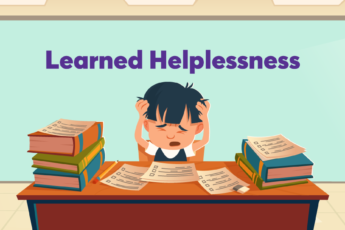How To Help Early Learners Improve Their Reading Skills
Reading is a gradual process, and not every learner acquires this skill the same way, or even at the same pace. Reading itself is not an innate skill and needs constant practice to develop. This does not take into account the natural affinity children develop, which could attract or repel them towards reading. As a guest speaker in Square Panda’s expert-hosted webinar mentioned:

To that effect, we offer several suggestions that inform the teaching of early childhood educators, to turn their students into fluent, confident readers for life.
1- Make Reading An Everyday Activity: Incorporate reading into the daily routine, as much as your curriculum allows. Set aside a specific time for reading, and encourage active participation from each child. The practice of reading to them and having them read to you is important to develop a happy and healthy relationship with this skill. For younger readers, start in increments for only around 10-15 minutes a day. As an added incentive, you can set up a small reading corner for kids, filling up this space with colorful chairs, tables, pillows, and of course, books.

2- Find The Right Literature: A well-developed reading habit reaps rewards for a lifetime, but only when children adopt it willingly. If children are obliged to read books they don’t like, their reading habit will be over before it even begins. Give your little learners every reason to like reading; invest time in finding each child’s preferred book, series, or genre. To start with, you can introduce children to a wide variety of stories and books, allowing children to develop an affinity for various styles, themes, and genres.

3- Reading From Your Surroundings: Reading does not only always have to be out of books and literature; it can be wherever you find inspiration from. Words and letters are all around us, and all we have to do is point them out to children. Create a mini-restaurant and help students read off the menu, play a cartoon clip or song that features letters and words and ask children to repeat it, or help them read out posters and kid-friendly advertisements. Let your imagination run wild, and let it do the work of developing your students’ reading habits.

4- Adding Fun To The Reading Process: Mix elements of gamification and fun into the traditional reading process, for added engagement.
- Enact scenes and read dialogues in special voices. Children can be assigned voices for characters too, once they develop basic reading skills.
- Humanise characters in stories. Add backgrounds to them, help children understand the morals and learning at the end of each read, and ask children their thoughts about the story. Not only will they reflect on the book they have read, but they also simultaneously boost their ability to speak with confidence.
- Experiment in some engaging and fun reading games. There are numerous interactive edtech apps and physical books specially designed to entice young learners. Anticipating a new experience with each book could further encourage children to be present for reading time.

5- Engage In Reading-Adjacent Activities: To encourage children to develop a true love for books, educators can guide children towards various reading-parallel activities. They can create DIY books (LINK to DIY Book Activity-not yet uploaded on YT), author their own comics, and even design bookshelves. The act of creatively exploring books and not necessarily reading them reduces the pressure children feel to love books, and allows them to choose reading activities at their own pace.

6- Going Beyond Reading: Enliven the reading experience further by incorporating additional activities (both digital and physical), competitions, and even rewards (new colourful additions to the reading corner, book-shaped keychains) that celebrate books and reading.For instance, reading games for kids like finding the rhyming words from a particular sentence, identifying the right sound for an action, or matching an image to a word, are simple to come up with, don’t require a lot of props, and are easy to play.

*Download this PDF for fun games and activities to boost reading readiness skills in the classroom.
Not every child will develop a love for reading, but that does not mean children will not become readers. Nor does it negate the essential nature of the reading skill itself. The learned activity has the potential to make or break a child’s future and influence their success in many ways. Let us do our part to ensure no child is left behind because they cannot read.
One of Square Panda India’s core functions is to develop early literacy in children across our nation. See our efforts towards this cause: ecce.squarepanda.in.




Leave a Comment